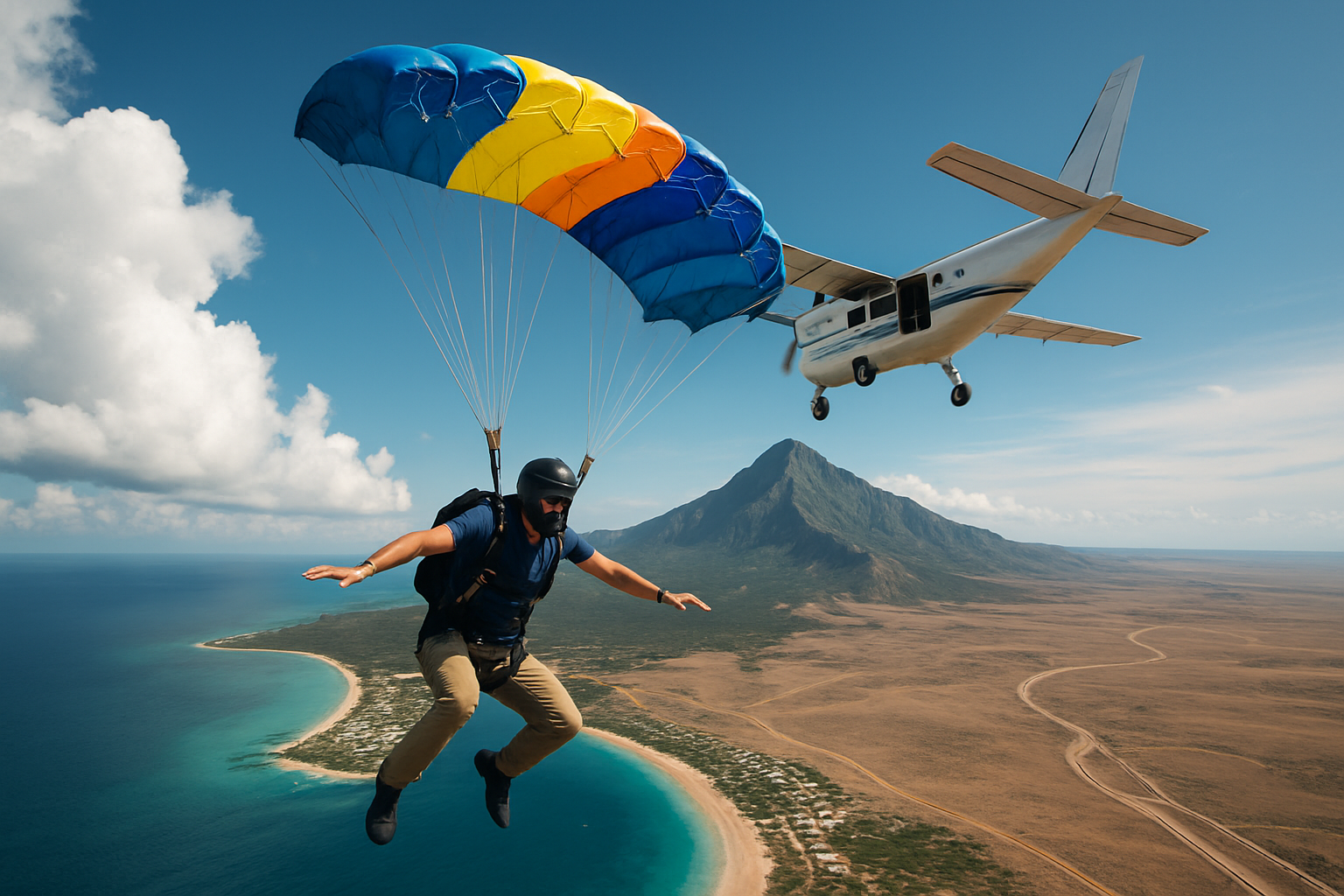Skydiving Tourism: Freefall Adventures Around the Globe
Soaring through the sky, feeling the rush of wind against your face, and experiencing the ultimate adrenaline high – skydiving has evolved from a niche extreme sport to a thrilling form of adventure tourism. This aerial escapade is attracting thrill-seekers worldwide, transforming breathtaking landscapes into exhilarating drop zones. As the popularity of skydiving tourism grows, destinations are capitalizing on their unique terrains and views to offer unforgettable freefall experiences.

Global Drop Zones: Jumping into Paradise
From the azure waters of the Great Barrier Reef to the rugged mountains of New Zealand, skydiving destinations are as diverse as they are breathtaking. Dubai offers jumps with views of the Palm Jumeirah, while Hawaii provides descents over volcanic landscapes and pristine beaches. Each location offers a distinct perspective, allowing skydivers to appreciate natural wonders from an unparalleled vantage point. The choice of drop zone has become as crucial to the experience as the jump itself.
The Economics of Aerial Adventure
The growth of skydiving tourism has had a significant economic impact on many regions. Drop zones often become hubs for adventure tourism, attracting not only skydivers but also their friends and families. This influx of visitors boosts local economies through increased demand for accommodations, restaurants, and other tourist services. Moreover, the industry has created jobs ranging from instructors and pilots to support staff and tour operators, contributing to local employment and skill development.
Safety and Regulation in the Skydiving Industry
As skydiving tourism expands, so does the focus on safety and regulation. Countries and regions have implemented stringent safety standards and certification processes for operators. Regular equipment checks, instructor training, and weather monitoring are now standard practices. The International Skydiving Commission works to establish global safety guidelines, ensuring that the thrill of the jump is matched by robust safety measures. This emphasis on safety has been crucial in building trust and encouraging more people to take the leap.
Environmental Considerations and Sustainable Practices
The growing popularity of skydiving tourism has raised questions about its environmental impact. Progressive operators are implementing eco-friendly practices, such as using more fuel-efficient aircraft and adopting sustainable land management at drop zones. Some centers are partnering with local conservation efforts, using their aerial perspective to assist in wildlife monitoring and environmental surveys. These initiatives demonstrate how adventure tourism can coexist with and even contribute to environmental stewardship.
Skydiving Tourism: Facts and Insights
-
The average freefall lasts about 60 seconds, descending at speeds of up to 120 mph
-
The world’s highest commercial skydive is offered in Nepal, jumping from 23,000 feet above sea level
-
Tandem skydiving allows first-timers to jump attached to a certified instructor after just 30 minutes of ground training
-
Some drop zones offer specialty jumps, such as night jumps or jumps over iconic landmarks
-
The skydiving industry contributes billions to the global economy annually
-
Modern skydiving equipment includes automated activation devices that deploy the parachute if the skydiver fails to do so
As skydiving tourism continues to soar in popularity, it offers more than just an adrenaline rush. It provides a unique way to experience the world’s most beautiful locations, challenges personal limits, and creates unforgettable memories. With ongoing advancements in safety and a growing emphasis on sustainability, skydiving tourism is poised to reach new heights, offering thrill-seekers and adventurers alike the ultimate freefall experience in stunning destinations around the globe.





